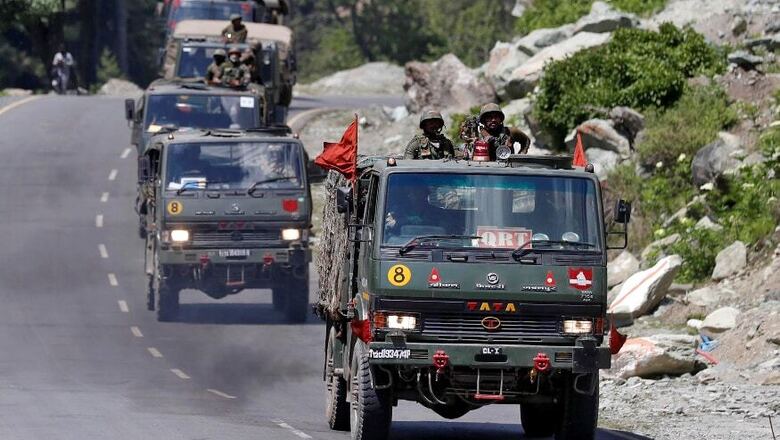
views
India on Saturday strongly rejected China's claim of sovereignty over Galwan Valley in eastern Ladakh, asserting that attempts by the Chinese side to "advance exaggerated and untenable" claims are not at all acceptable.
Ministry of External Affairs (MEA) Spokesperson Anurag Srivastava said China's claim over Galwan Valley was not in accordance with its own position in the past, noting attempts of transgression by the Chinese side were invariably met with appropriate response from the Indian troops.
"The position with regard to the Galwan Valley area has been historically clear. Attempts by the Chinese side to now advance exaggerated and untenable claims with regard to Line of Actual Control (LAC) there are not acceptable. They are not in accordance with China's own position in the past," he said, responding to a question on the issue.
The Galwan Valley was the site of the violent clash between the two armies on Monday evening in which a Colonel and 19 other Indian Army personnel were killed.
India's rebuttal came after a spokesperson of the Chinese foreign ministry on Friday again claimed that the Galwan Valley is located on the Chinese side of the LAC, despite New Delhi quashing on Thursday the Chinese army's claim of sovereignty on the same area.
Srivastava said Indian troops are fully familiar with the alignment of the LAC in all sectors of the India-China border areas, including the Galwan Valley.
"They abide by it scrupulously here, as they do elsewhere. The Indian side has never undertaken any actions across the LAC. In fact, they have been patrolling this area for a long time without any incident," he said.
Srivastava said all infrastructure built by the Indian side is naturally on its "own side of the LAC".
"Since early May 2020, the Chinese side has been hindering India's normal, traditional patrolling pattern in this area. This had resulted in a face-off which was addressed by the ground commanders as per the provisions of the bilateral agreements and protocols," he said.
"We do not accept the contention that India was unilaterally changing the status quo. On the contrary, we were maintaining it," Srivastava added.
He said the Chinese side attempted to transgress the LAC in other areas of the Western Sector of the India-China border areas but the attempts were invariably met with an "appropriate response" from the Indian side. He also referred to a telephonic conversation between External Affairs Minister S Jaishankar and his Chinese counterpart Wang Yi on Wednesday.
"We expect that the Chinese side will sincerely follow the understanding reached between the foreign ministers to ensure peace and tranquility in the border areas, which is so essential for the overall development of our bilateral relations," he said.
Srivastava also referred to decisions taken at Lt General-level meeting between the two militaries on June 6, which included a process for de-escalation and disengagement along the LAC that involved reciprocal actions.
"Both sides had agreed to respect and abide by the LAC and not undertake any activity to alter the status quo. However, the Chinese side departed from these understandings in respect of the LAC in the Galwan Valley area and sought to erect structures just across the LAC," he said. "When this attempt was foiled, Chinese troops took violent actions on June 15 that directly resulted in casualties."
During the telephonic talks, Jaishankar conveyed to Wang India's protest in the "strongest terms" on the events leading up to and on the violent face-off on June 15, and "firmly rejected" the "unfounded allegations" made by the Chinese side and the "misrepresentation of the understandings" reached between the senior commanders on June 6, the MEA spokesperson said.
"The two Ministers also agreed that the overall situation would be handled in a responsible manner, and that both sides would implement the disengagement understanding of June 6 sincerely," Srivastava said, adding the two sides are in regular touch and early meetings of military and diplomatic mechanisms are currently being discussed.
The two armies were engaged in a standoff in Galwan and several other areas of eastern Ladakh since May 5 when the two sides clashed on the banks of the Pangong Tso. The situation in the area deteriorated after around 250 Chinese and Indian soldiers were engaged in a violent face-off on May 5 and 6. The incident in Pangong Tso was followed by a similar incident in north Sikkim on May 9.



















Comments
0 comment